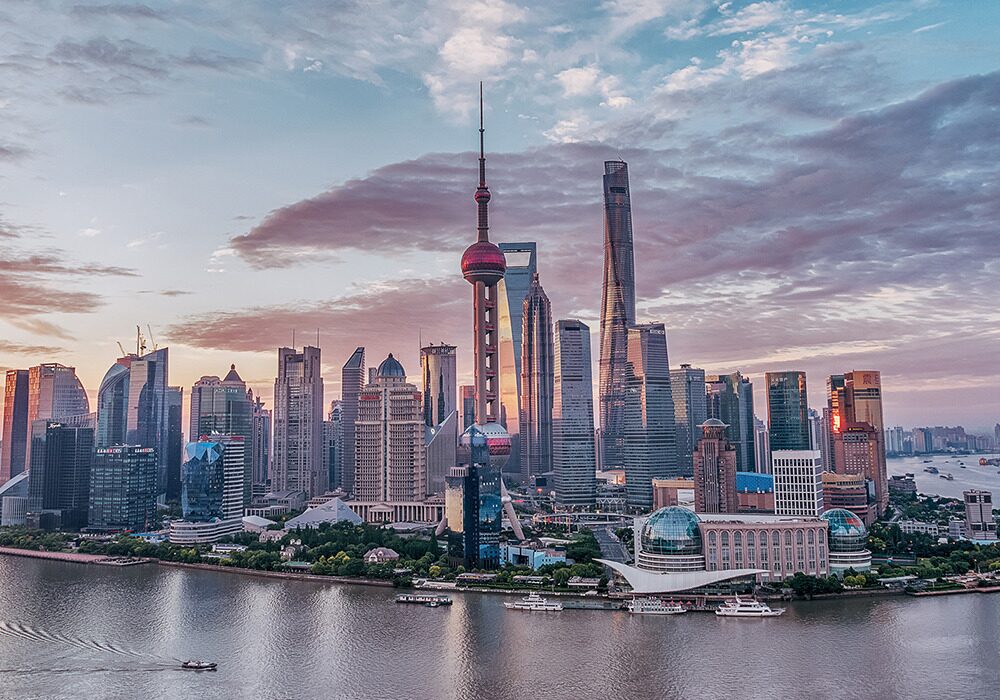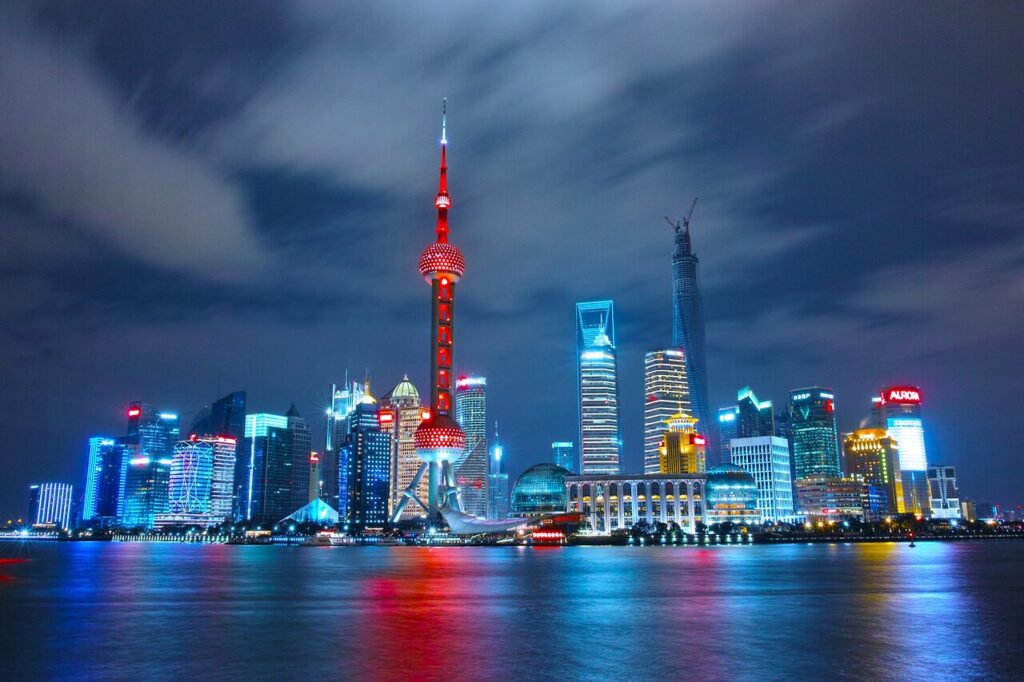Shanghai is a global hub and landmark city in China. It has transformed from a small fishing village into a major international metropolis.

City Overview
- Population: Approximately 24.87 million in the administrative area as of 2023, and about 29.87 million in the wider metropolitan area.
- Area: Total area is approximately 6,340 km² (6,218 km² land, 121 km² water).
- Climate: Oceanic climate with an annual average temperature of about 16°C and rainfall of about 1,140 mm/year.
- Languages: Standard Chinese (Mandarin) and Shanghai dialect (Wu Chinese) are widely used, with English also commonly spoken.
- Religion: Predominantly non-religious, with traditional Buddhism, Taoism, Christianity, Catholicism, and Islam coexisting.
- Establishment: Began as a small fishing village on the coast, established during the Northern Song Dynasty (960–1127), and grew into an international city after its opening in the 19th century.
History
- Ancient & Medieval (Before 1127): Started as a small fishing village and market, growing into a commercial city after the Northern Song Dynasty.
- Ming & Qing Dynasties (14th-19th Century): Developed cotton and silk industries, with coastal defenses leading to urbanization.
- Modern Opening Period (1842-1949): Opened after the Opium War in 1842, leading to the establishment of international concessions (British, French, etc.) and its rise as a major trade and financial center in East Asia by the 1930s.
- Revolution & War (1937-1949): A central point in the Second Sino-Japanese War, notably the 1937 Battle of Shanghai, and was reorganized under Communist Party control after liberation.
- Reform & Modernization (1978-Present): Became a central city for China’s reform and opening-up policy after 1978. Pudong New Area was officially designated in 1990, followed by the development of Pudong, establishment of a free trade zone, and opening of the stock exchange in 1993, attracting foreign capital and high-tech industries. It established itself as a global metropolis and world financial center after hosting the 2010 World Expo.

Geography
- Location: Situated on the Yangtze River Delta coast, upstream of the Huangpu River, bordering the Yellow Sea to the east. It is a flat terrain with an average elevation of 4 meters, featuring a complex network of canals and waterways.
- Administrative Divisions: Divided into 16 districts.
- Puxi: The historical and cultural center to the west, home to about 48% of the population.
- Pudong: The economic and financial hub to the east, developed since 1993, with a population of about 5.68 million and a GDP of approximately 1.6 trillion CNY (2022).
Culture
- Fusion of Tradition and Modernity: Characterized by Shikumen architecture in Puxi and “Haipai culture,” which is a hybrid culture based on East-West exchange.
- Shanghai is the birthplace of Chinese cinema and theater, with a flourishing film industry since 1913.
- Multicultural City: Rich in diversity due to the influx of people from across China and overseas, making it a diverse international city. It also has an active multicultural LGBT community with regular Pride events.
- Arts and Entertainment: Cultural facilities expanded after Expo 2010 (e.g., Shanghai Museum, Xishekou Cultural District). Policies promoting the cultural and creative industries are in place.
Environment
- Natural Environment & Green Spaces: Approximately 19% of the city is green space, and the total green space ratio including water bodies is high. Ecological and cultural spaces have been created along the 45km Huangpu River waterfront and Suzhou Creek. Urban greening is expanding with “green corridors, vertical forests, green rooftops”.
- Environmental Challenges & Policies: Persistent issues include air, water, and noise pollution (smog and river pollution). Efforts for improvement include industrial relocation, waste recycling (around 80%), and river restoration. Traffic congestion and vehicle regulation (e.g., license plate auction system) are also implemented. Shanghai is also focusing on climate governance, hosting forums like the 2025 Shanghai Climate Week, and accelerating renewable energy transition.

Economy
- Economic Scale & Industrial Structure: Shanghai’s GDP was approximately 3.87 trillion CNY (around $540 billion) in 2020, comparable to major global cities. It hosts the headquarters of 13 Fortune 500 companies and has the largest stock market in Asia-Pacific.
- Industry & Technology Hub: A financial center with the Shanghai Stock Exchange and a global financial hub. It is also strong in manufacturing and high technology, investing over 4% of GDP in high-tech R&D, with developed chemical, electrical, and mechanical industries.
- Transportation, Trade, and Logistics Hub: Possesses the world’s largest container port, the Maglev high-speed train, and an extensive Shanghai Metro system (772 km).
Key Locations
- History & Culture Landmarks:
- Puxi: The Bund, Yu Garden, Shanghai Museum, Jing’an Temple.
- Pudong: Oriental Pearl TV Tower, Jin Mao Tower, Shanghai Tower, Shanghai World Financial Center.
- Entertainment Attractions: Shanghai Disney Resort, Century Park, China Hongkou Stadium, and numerous attractive streets and commercial districts.
- Transportation Infrastructure:
- Shanghai Metro: 18 lines, 772 km in operation.
- Maglev High-Speed Train: Connects the city center to Pudong Airport, with a top speed of 430 km/h.
Conclusion
Shanghai has historically grown rapidly since its opening, becoming a key economic and cultural center in East Asia. It is a city with complex attractions including “Haipai culture,” film heritage, advanced industries, and a strong financial hub. While environmental improvement and green space expansion remain challenges, it is one of the world’s largest metropolises, pursuing various strategies for sustainable development. It embodies a harmony of history and modernity, possesses global economic centrality, showcases cultural diversity, and offers environmental and transport accessibility through eco-friendly green spaces and smart infrastructure like the Maglev.
